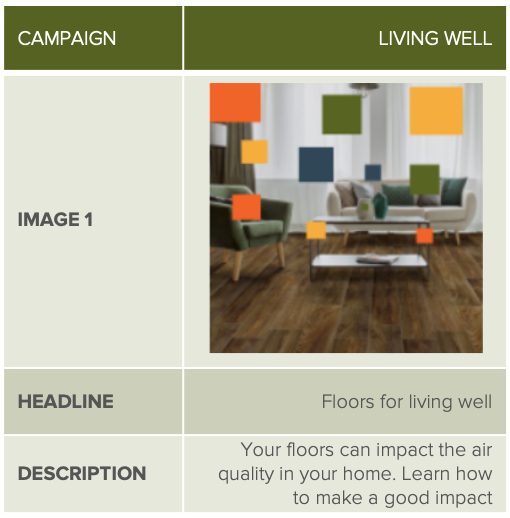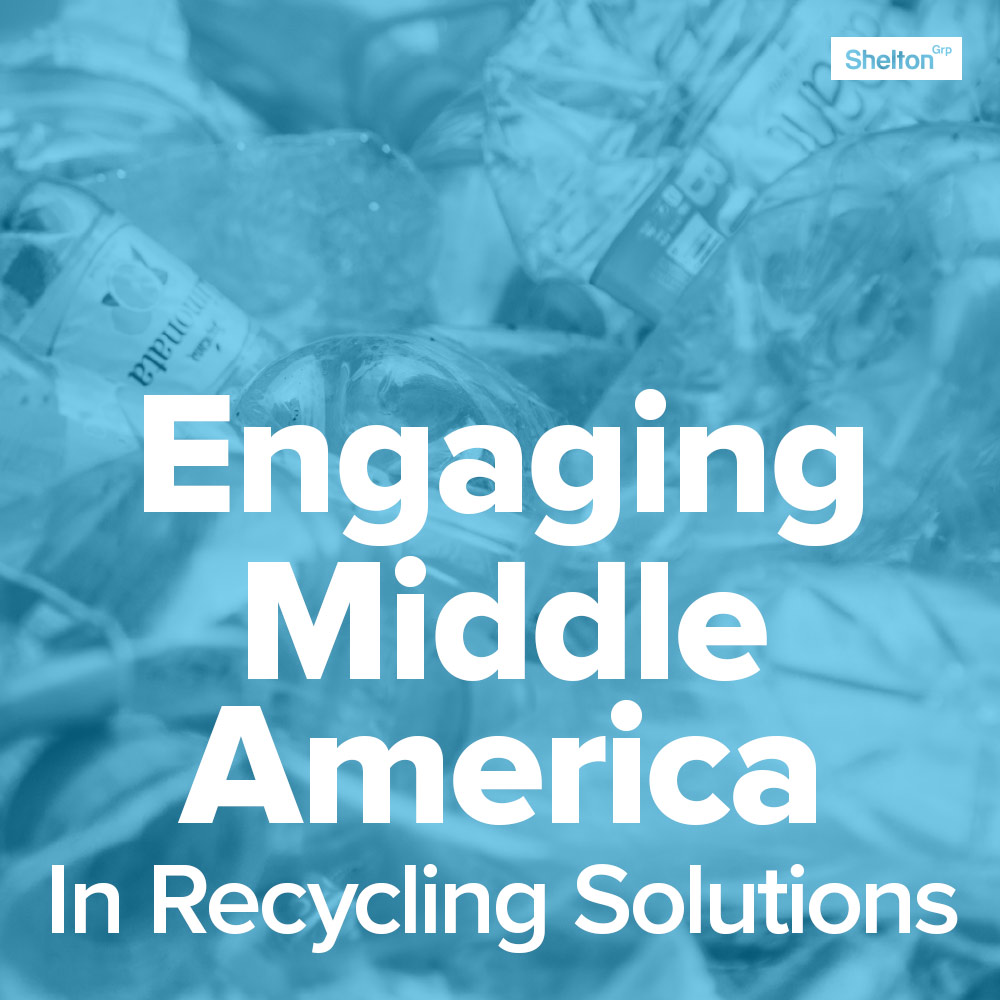Health messaging wins
Shelton Stat of the Week
24% of Americans are more concerned about indoor air quality than they were before the pandemic. — Eco Pulse®, May 2020
Thanks to the work of the Resilient Floor Covering Institute (RFCI), there’s a real sustainability story here, too. The Shelton Group team has brought that story to life for consumers at beautifullyresponsible.com and through the social and digital campaigns we’re running now. What I want to dig into today is what we’re learning from those campaigns.
Bottom line (and repeating my headline): health messaging wins.
Our Beautifully Responsible story construct has three pillars:
- Mindful Manufacturing: RFCI member brands are committed to sourcing, designing and manufacturing resilient flooring in ways that protect our planet.
- Living Well: Well-being starts inside, with carefully curated products designed with health in mind. A healthy lifestyle is more important than ever, and resilient flooring delivers a cleaner, healthier interior environment.
- Made for Life: Resilient flooring provides families/clients security in knowing their investment is protected with the ultimate in durability and performance – while reducing the amount of waste over the lifetime of their home/building thanks to the flooring’s long life.
 Each of those proof points gets expressed in consumer-facing terms throughout our campaign, and what we’re seeing, two and a half months into it, is that engagement with our messaging about living well (health) is far outperforming engagement with messaging about made for life (durability) and mindful manufacturing (environmental impacts). In fact, we’re seeing twice the level of engagement with living well than with made for life and three times the engagement than with mindful manufacturing. Our best performing ad features a living room with a beautiful floor, the headline “Floors for Living Well,” and the copy “Your floors can impact the air quality in your home. Learn how to make a good impact.”
Each of those proof points gets expressed in consumer-facing terms throughout our campaign, and what we’re seeing, two and a half months into it, is that engagement with our messaging about living well (health) is far outperforming engagement with messaging about made for life (durability) and mindful manufacturing (environmental impacts). In fact, we’re seeing twice the level of engagement with living well than with made for life and three times the engagement than with mindful manufacturing. Our best performing ad features a living room with a beautiful floor, the headline “Floors for Living Well,” and the copy “Your floors can impact the air quality in your home. Learn how to make a good impact.”
If you’ve been reading our reports and listening to our conference presentations, this is not at all surprising. You can read more about what we’ve been seeing and saying related to health here, and you can download one of my latest presentations related to the role of health messaging in marketing homes here (password: Comfort).
One caveat: in the rock, paper, scissors game of marketing building products to consumers, beauty beats them all (except with a small percentage of the population). Something we see clearly in our Beautifully Responsible campaign – and we’ve seen it in other campaigns as well – is that people respond to pictures of beautiful homes/home spaces. You need both to have a successful campaign.
So try it out. Try pairing gorgeous images with “healthy home” messaging. You’ll see your consumer engagement go up.

Health and wellness become top of mind for new-home builders and buyers
— Builder
Taylor Morrison, one of the top 10 largest home builders in the U.S., has launched its TM LiveWell initiative, partly in response to pandemic news coverage about air circulation, but also in response to strong interest in home health and wellness among home buyers that it surveyed. Of the 2,000 respondents, the younger generation – 40% of millennials and 35% of Gen X buyers – was particularly interested in wellness aspects of a new home. “There’s a healthy movement that’s been coming for quite some time,” says Stephanie McCarty, chief marketing and communications officer at Taylor Morrison. “We think this is here to stay…. We really think that consumers will have an eye for healthier homes. It will be a permanent, structural shift.” Read more…

Finding your brand’s wellness factor
— WholeFoods Magazine
Not to be confused with Whole Foods Market, WholeFoods Magazine covers the natural products industry, but this article’s theme focuses on marketing strategy that’s applicable to almost any product. As the author says, “You can avoid becoming outdated by staying in tune with what consumers are currently looking for in the health aspects of brands.” The article further notes that health is essential in your branding and your products because consumers want to know why what they are purchasing is healthier. Making sure your brand and product meet the needs of your audience has to be structured into the engineering, and making sure they reach your audience has to be done through the right build-up and marketing. Read more…
Engaging Middle America In Recycling Solutions
Before COVID-19, 41% of Americans wanted to be seen as someone who buys green products, and many could cite an example of a brand they’d purchased (or not purchased) because of the environmental record of the manufacturer. Now, in the middle of the pandemic, the numbers have dropped dramatically. The big question is, what does this mean for engaging Americans in their number one green activity: recycling? Another question is, what does it mean for companies’ sustainability brand?
Our latest report answers these questions by digging into current consumer attitudes, how they impact consumer behavior, and how organizations should respond to ensure recycling – and other green behaviors – keep happening.


-
TAGS:Built Environment